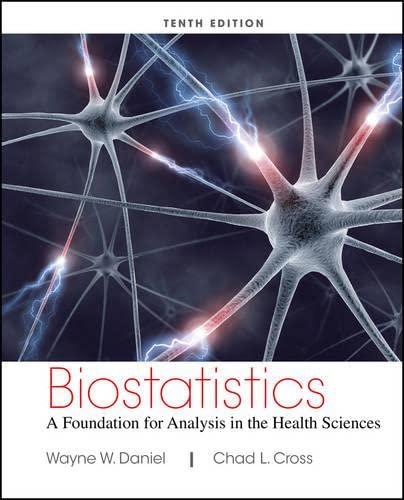Winters et al. (A-15) conducted a study involving 248 high-school students enrolled in introductory physical education courses.
Question:
Winters et al. (A-15) conducted a study involving 248 high-school students enrolled in introductory physical education courses. The researchers wanted to know if social cognitive theory constructs were correlated with discretionary, “leisure-time” physical exercise. The main outcome variable is STREN, which is the number of days in a week that a high-school student engaged in strenuous physical activity (operationally defined as exercise that results in sweating, labored breathing, and rapid heart rate). Students in the study filled out lengthy questionnaires from which the following variables were derived:
SELFR100—measures personal regulation of goal-directed behavior (higher values indicate more goal oriented).
SS100—measures social support, social encouragement, and social expectation that are provided by friends and family for physical exercise (higher values indicate more support).
SSE100—measures perceived ability to overcome barriers to exercise (higher values indicate higher ability).
OEVNORM—measures outcome expectations and their associated expectancies for physical exercise (higher values indicate stronger perceived links to desired outcomes from exercise).
With these data (LTEXER),
(a) Calculate the bivariate correlation for each pair of variables and interpret the meaning of each.
(b) Using STREN as the dependent variable, compute the multiple correlation coefficient.
(c) Using STREN as the dependent variable, calculate the partial correlation coefficient for STREN and SELFR100 after controlling for SS100.
(d) Using STREN as the dependent variable, calculate the partial correlation coefficient for STREN and SSE100 after controlling for OEVNORM.
Note that there many missing values in this data set.
Step by Step Answer:

Biostatistics A Foundation For Analysis In The Health Sciences
ISBN: 9781118302798
10th Edition
Authors: Wayne W. Daniel, Chad L. Cross






